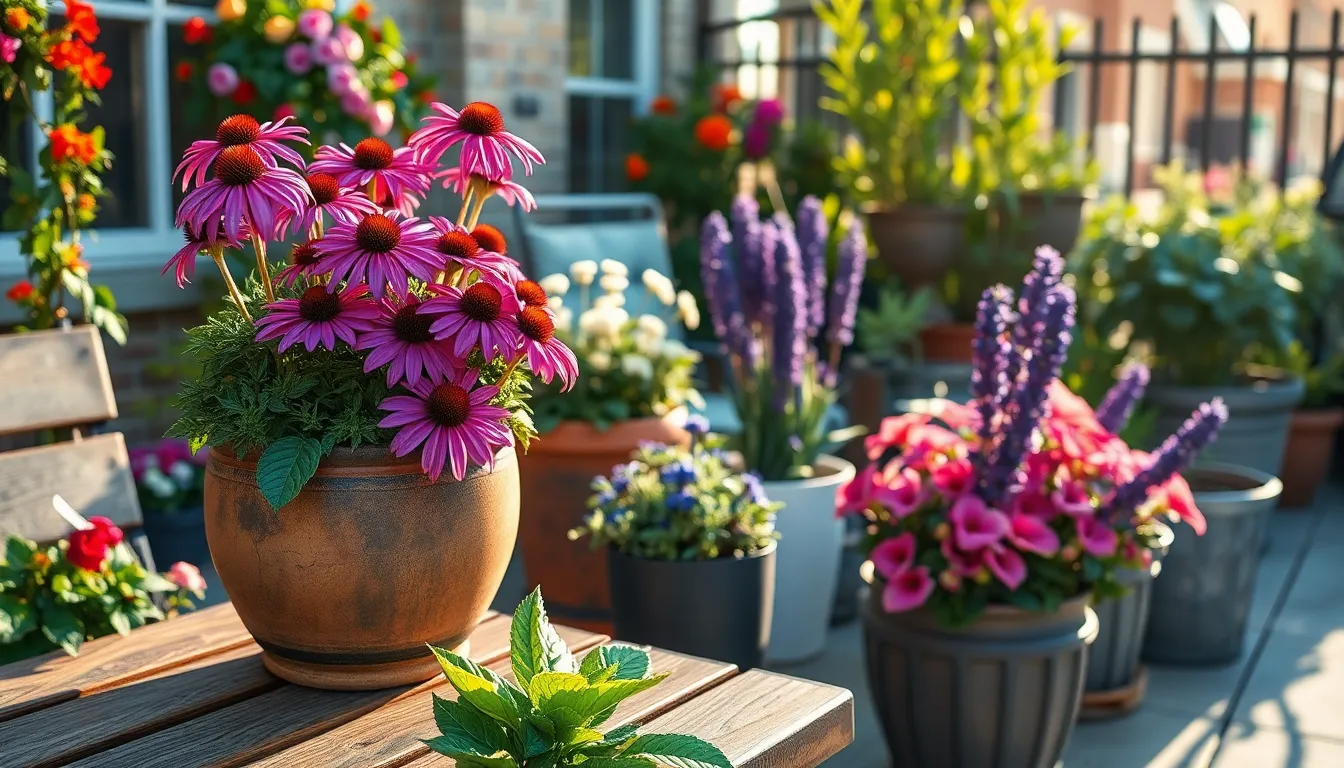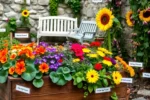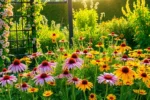Gardening in small spaces can be a delightful challenge, offering both new and seasoned gardeners the chance to get creative with their plant choices. Embracing the beauty of perennials is a smart way to ensure your compact garden bursts with life year after year, making every inch count with color and texture.
For those just beginning their gardening journey, perennials provide a reliable foundation to build upon, requiring less replanting and offering a rewarding sense of continuity. Experienced gardeners will appreciate the opportunity to experiment with diverse perennials that can transform modest spaces into vibrant, lush retreats.
In this article, we’ll explore 13 stunning perennials that are perfectly suited for small gardens, each bringing its unique flair and resilience. From the delicate hues of shade-loving plants to sun-drenched showstoppers, you’ll discover a variety of options to suit your specific conditions and style.
Understanding Perennial Plant Basics
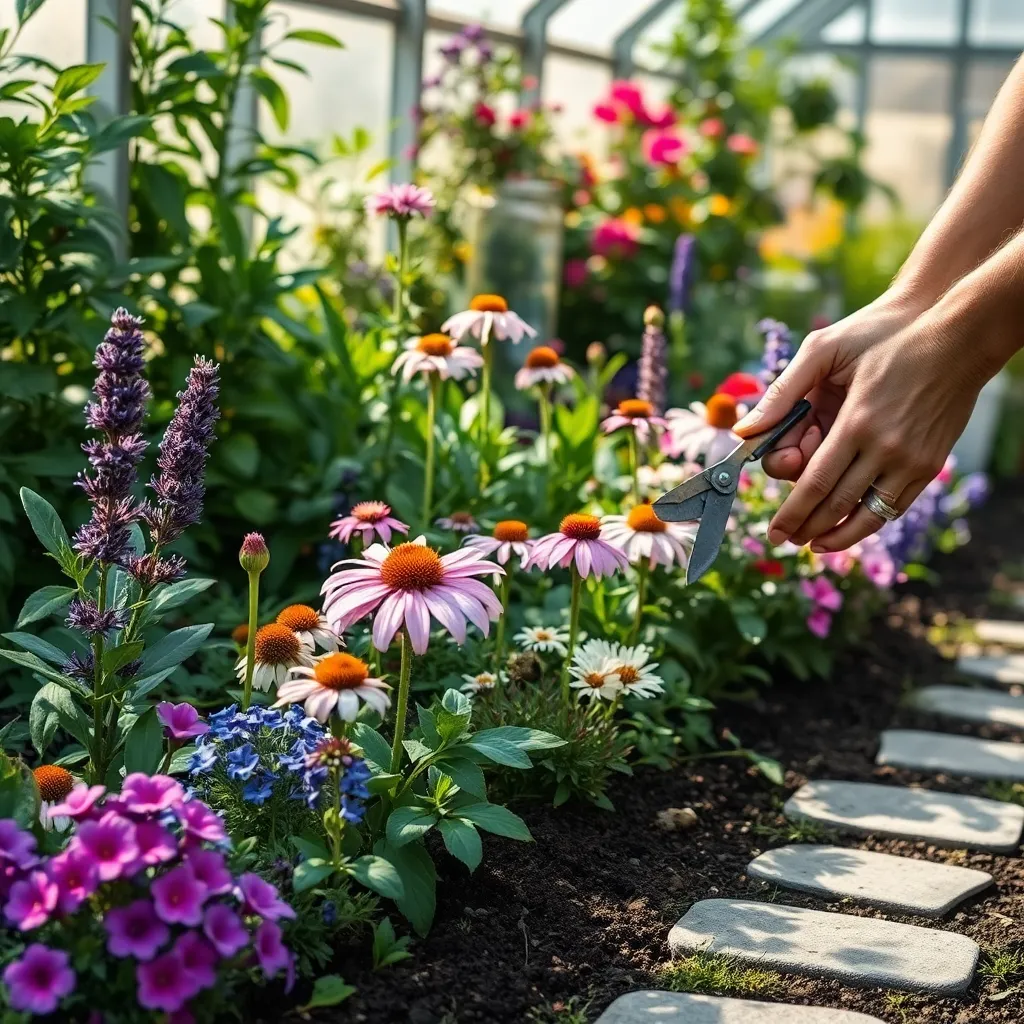
Perennials are a fantastic choice for small spaces because they return year after year, providing continuous beauty with minimal effort. Understanding their basic needs can ensure they thrive in your garden, making the most of their natural resilience.
For optimal growth, most perennials prefer well-draining soil rich in organic matter. Amending your garden soil with compost or aged manure can provide these plants with the nutrients they need to flourish.
Watering is crucial, especially during a perennial’s first year as it establishes its root system. Typically, these plants require about an inch of water per week, either from rainfall or supplemental watering.
Consider the sunlight requirements when selecting perennials for your garden. Many perennials, such as lavender and sedum, thrive in full sun, while others like hostas and ferns prefer the shade.
Advanced gardeners may want to experiment with dividing perennials every few years to encourage vigorous growth and prevent overcrowding. This technique not only rejuvenates the plant but also provides you with more plants to spread throughout your garden or share with friends.
Choosing Compact Perennials Wisely
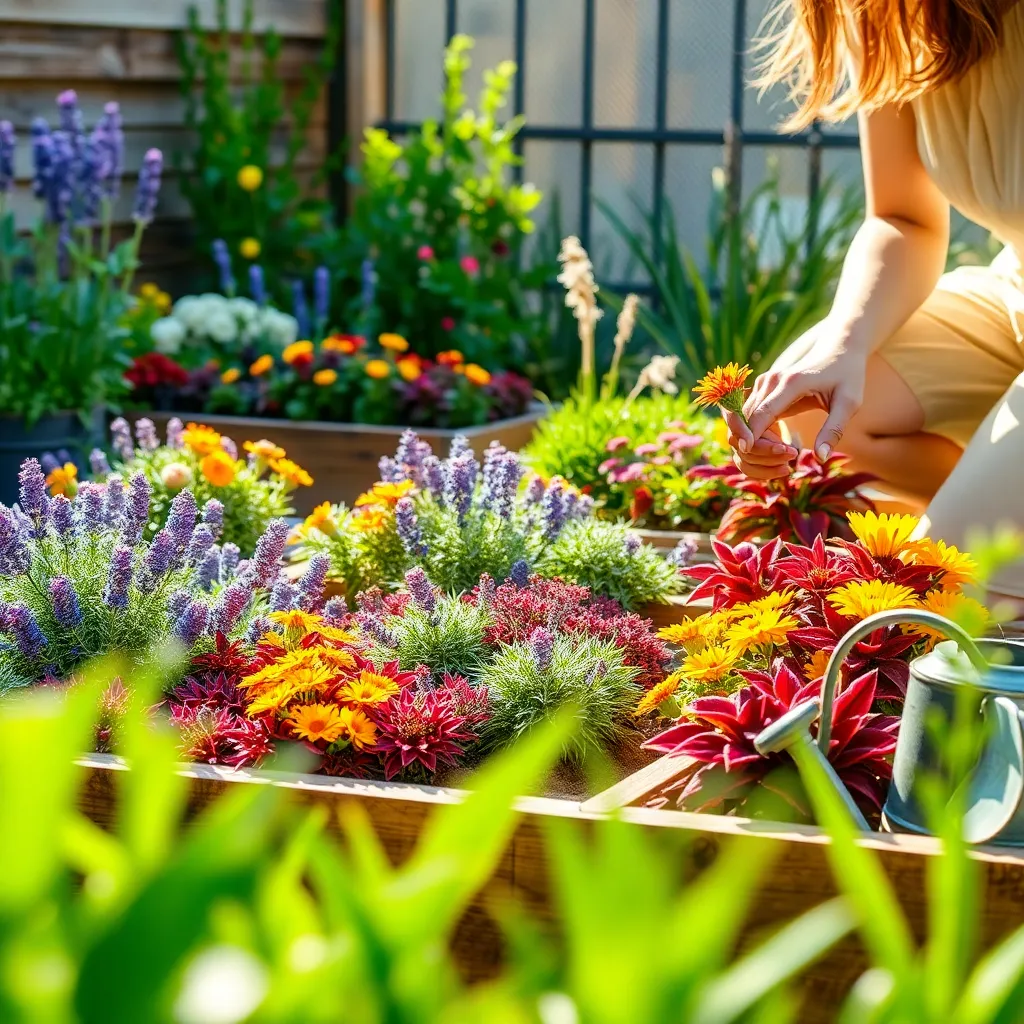
When choosing compact perennials for small spaces, it’s crucial to select varieties that won’t outgrow their designated area. Consider plants like dwarf coneflowers or compact lavender, which offer vibrant blooms without overwhelming your garden layout.
Look for perennials that thrive in your specific climate and soil type to ensure healthy growth. For instance, compact varieties of sedum and thyme are both drought-tolerant and suitable for various soil conditions, making them excellent choices for low-maintenance gardens.
Maximize your space by selecting perennials that offer multiple seasons of interest. Plants such as dwarf asters and heuchera provide colorful foliage and flowers that can enhance your garden’s aesthetic appeal from spring through fall.
For those with a bit more gardening experience, consider experimenting with plant layering to create depth in small spaces. Use shorter perennials at the front and slightly taller ones behind to build a visually appealing garden that appears larger than it actually is.
Small Space Garden Design Tips
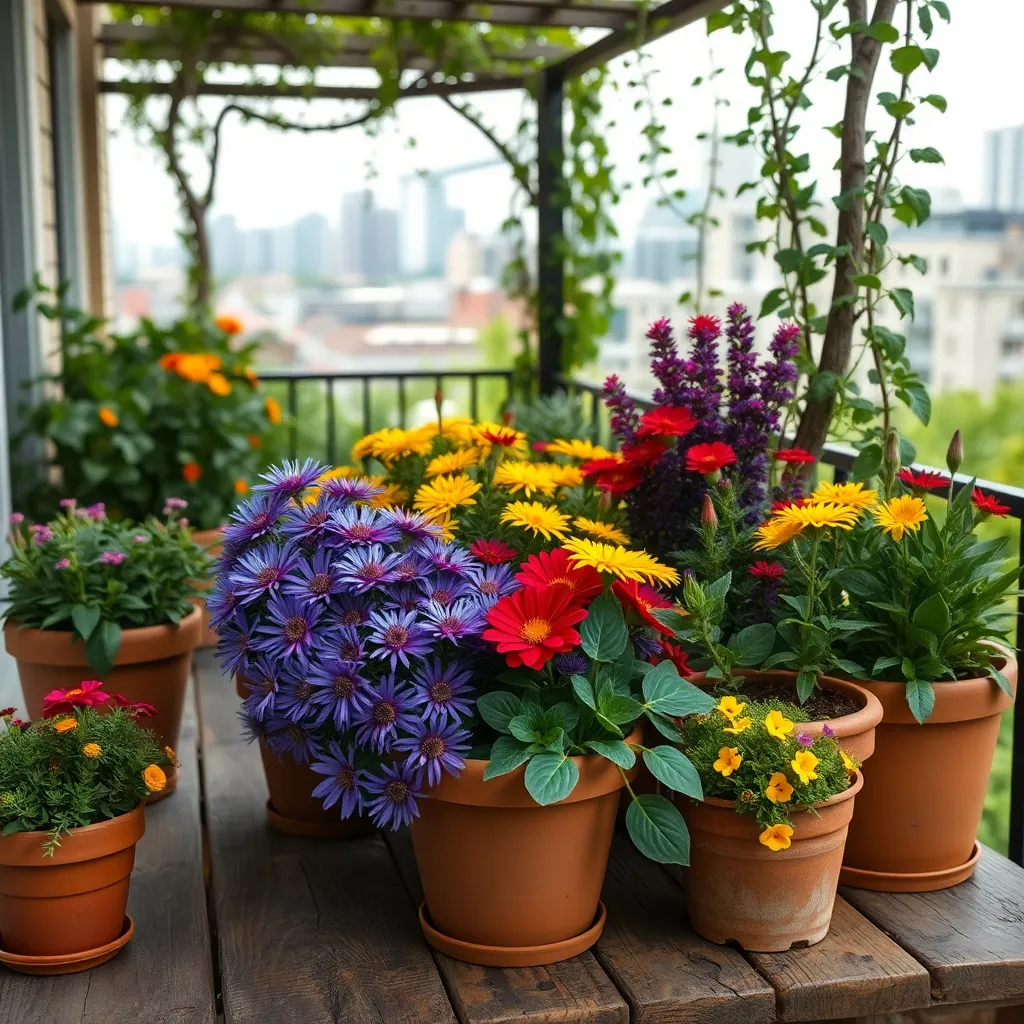
When designing a small space garden, it’s crucial to maximize every inch of available space. Vertical gardening is an excellent technique to consider, allowing you to grow more plants without needing additional ground area.
Consider using tiered planters or hanging baskets to create layers in your garden. These methods not only increase your planting area but also add visual interest to your small space.
Choose plants with a compact growth habit to avoid overcrowding and ensure each plant has room to thrive. Dwarf varieties of your favorite perennials can add beauty without taking over your space.
Clever placement of plants can also enhance the overall aesthetic and efficiency of your garden. Place taller plants at the back or center, and gradually work down to shorter plants to create depth and ensure all receive adequate sunlight.
Consider the use of reflective surfaces like mirrors or light-colored walls to make your small garden feel larger. They can help distribute sunlight more effectively, benefiting your plants’ growth.
It’s important to maintain proper plant care in a small space, as limited room can lead to quicker nutrient depletion. Regularly replenish the soil with compost or slow-release fertilizers to keep your plants healthy and vibrant.
Watering in small space gardens requires attention to detail. Use a drip irrigation system or self-watering pots to ensure consistent moisture without overwatering, which is crucial in confined areas.
Low-Maintenance Perennials for Beginners

For those new to gardening, low-maintenance perennials can be a great way to add beauty without much effort. Daylilies are a fantastic choice, requiring minimal care and thriving in a variety of soil types. These hardy plants can tolerate drought, making them perfect for those who might forget occasional watering.
Hostas are another excellent option for beginners, particularly for shaded areas. They prefer rich, well-draining soil and only need watering when the top inch of soil feels dry. To maintain their lush appearance, consider adding a layer of mulch to retain moisture and suppress weeds.
If you’re looking for a splash of color, consider planting coneflowers. These tough perennials are drought-resistant and attract pollinators, which can help your garden thrive. Plant them in full sun and ensure they have well-drained soil to enjoy blooms from summer to fall.
For a fragrant addition to your garden, try growing lavender. This aromatic herb prefers sandy, well-drained soil and plenty of sunlight. By cutting back dead blooms, you’ll encourage new growth, extending the flowering period and keeping your garden vibrant.
Colorful Blooms in Tight Spaces
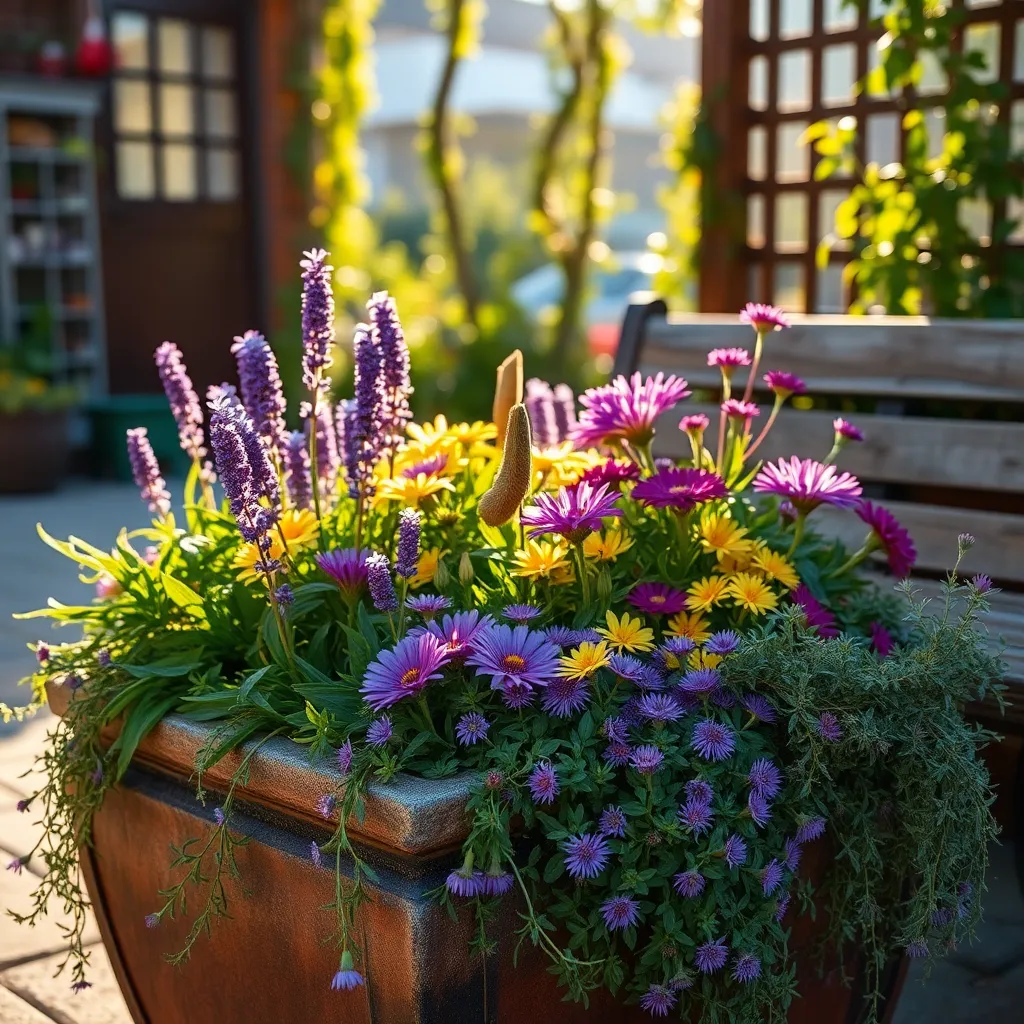
For gardeners with limited space, selecting the right perennials can create a stunning display of color without overwhelming the area. Plants like Coreopsis and Salvia are perfect for tight spaces, offering vibrant blooms and the ability to thrive in containers or small garden plots.
Coreopsis, with its bright yellow flowers, is a sun-loving plant that thrives in well-drained soil. To ensure healthy growth, water these plants moderately, allowing the soil to dry out slightly between waterings, which prevents root rot.
Salvia, known for its striking purple or blue spikes, adds height and color variety to small gardens. These perennials prefer a sunny location and benefit from a light pruning after the first bloom to encourage a second flowering phase.
For those looking to add even more diversity, consider using vertical space by incorporating climbing perennials like Clematis. Plant clematis in an area where the roots are shaded but the vines can reach the sun, ensuring a spectacular vertical display.
Fragrant Perennials for Tiny Gardens
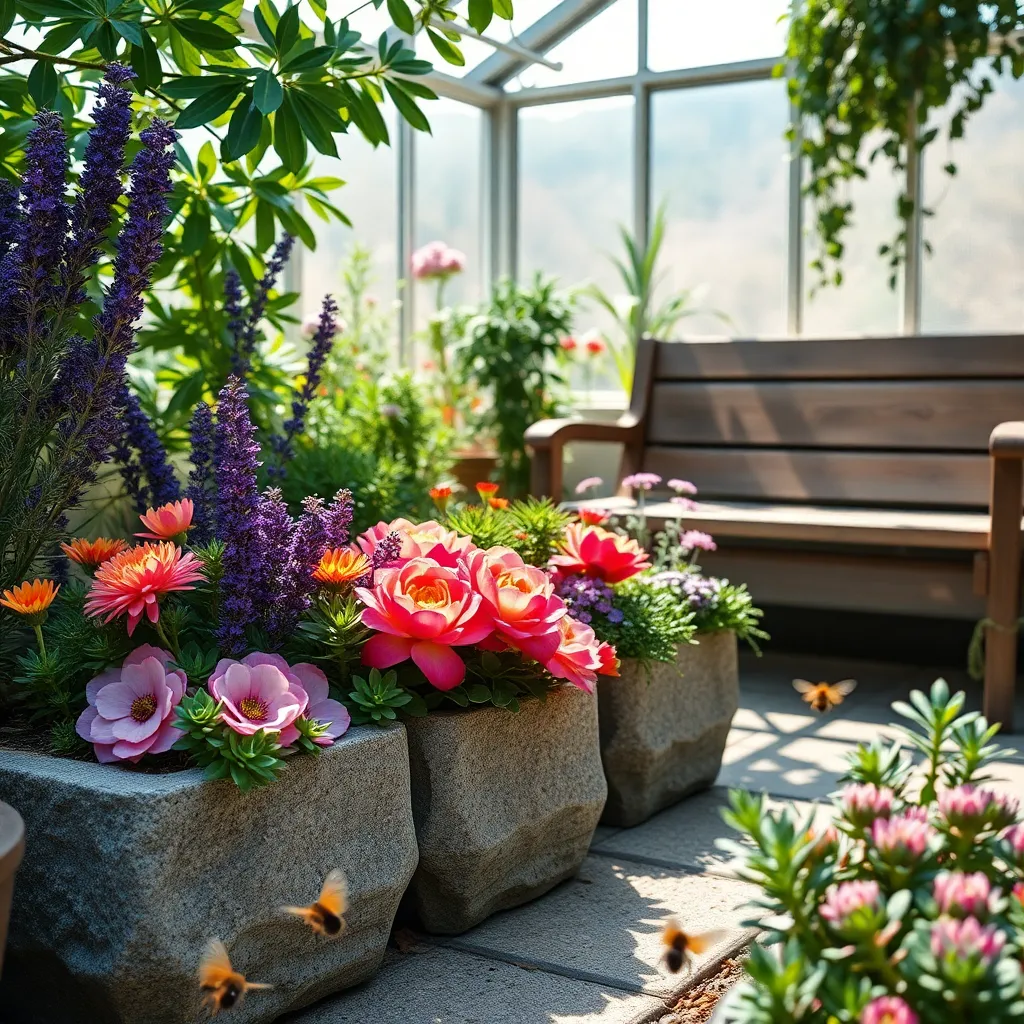
Creating a fragrant garden in a small space is entirely possible with the right selection of perennials. Lavender, with its aromatic blooms and silvery foliage, is an excellent choice for tiny gardens. Plant lavender in well-draining soil and ensure it receives plenty of sunlight. Regular pruning after blooming helps maintain its shape and encourages new growth.
Another delightful option is sweet alyssum, known for its honey-like fragrance and compact size. This plant thrives in full sun but can tolerate partial shade, making it versatile for small garden plots. Watering should be consistent, especially during dry spells, to keep it blooming profusely. Bonus tip: sweet alyssum can also be used as a border plant or in hanging baskets to maximize space.
If you’re looking for something a bit more unusual, consider planting dianthus, often called pinks. These perennials are known for their spicy, clove-like scent and attractive, fringed flowers. Dianthus prefers well-drained, slightly alkaline soil and benefits from regular deadheading to prolong its bloom period. For an advanced tip, try planting dianthus in a rock garden setting, where conditions mimic their natural habitat.
For a low-maintenance yet fragrant addition, creeping thyme offers both practicality and scent. This ground cover thrives in full sun and can handle poor soil conditions, making it ideal for small or challenging spaces. Water sparingly, as thyme is drought-tolerant once established, and consider using it between stepping stones for a delightful scent release as you walk through your garden. With these fragrant choices, even the tiniest garden can become a sensory delight.
Shade-Loving Perennials for Nooks
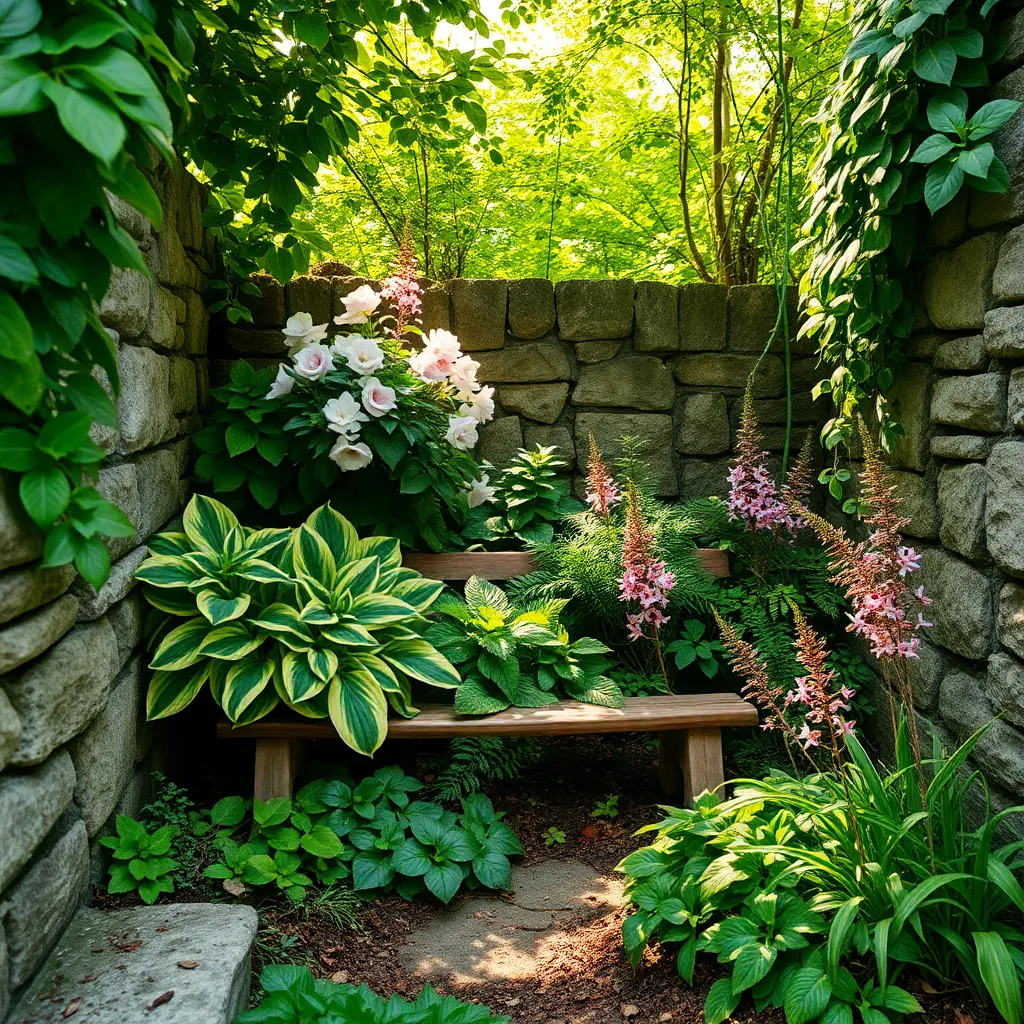
For those cozy corners where the sun rarely shines, shade-loving perennials offer a lush and vibrant solution. Hostas are a perfect choice, thriving in partial to full shade with their broad, textured leaves creating a beautiful ground cover.
When planting Hostas, ensure you use a well-draining soil rich in organic matter. Water them consistently to maintain moist soil, especially during dry spells, but avoid waterlogging to prevent root rot.
Another excellent option for shady nooks is the Astilbe, known for its feathery plumes and fern-like foliage. These perennials prefer consistently moist soil and benefit from a layer of mulch to retain moisture and suppress weeds.
For a burst of color in low-light areas, consider the Japanese Painted Fern, which offers silvery foliage with hints of purple and green. This fern thrives in rich, well-drained soil and appreciates regular watering to keep the soil evenly moist.
Sun-Loving Perennials for Patios
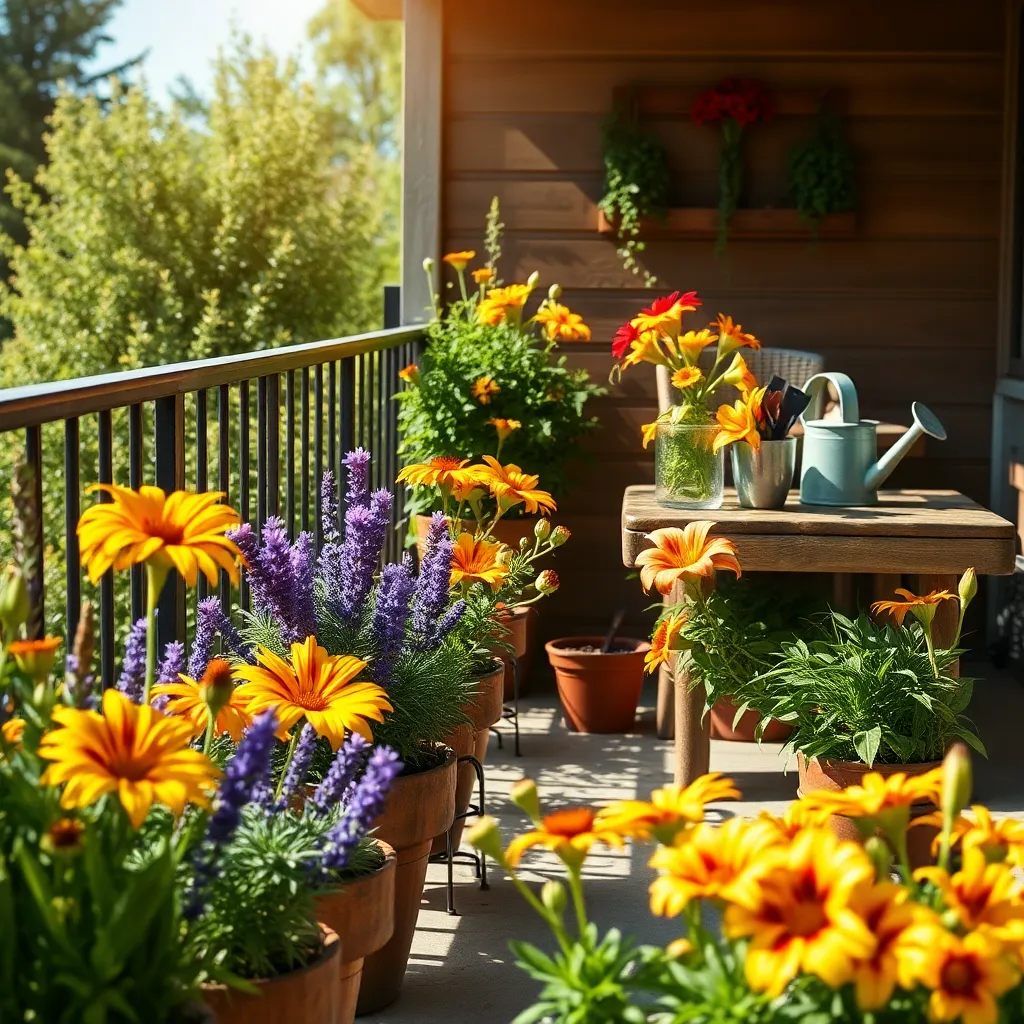
For gardeners with sunny patio spaces, choosing the right perennials can transform your area into a vibrant oasis. Coreopsis, often known as tickseed, is an excellent choice due to its long blooming period and minimal care requirements.
These hardy plants thrive in well-draining soil and require full sun to flourish. Watering should be consistent during the first growing season to establish a strong root system, but thereafter, coreopsis can tolerate dry spells.
Another fantastic sun-loving perennial is the lavender plant, which brings both fragrance and beauty to any patio. It prefers sandy or gritty soil, which ensures adequate drainage and prevents root rot.
Lavender thrives best when pruned annually, encouraging bushier growth and more prolific blooming. Consider adding mulch around the base to help retain moisture and suppress weeds, enhancing the plant’s health.
For gardeners seeking a splash of color, Salvia offers vibrant blooms and attracts pollinators like bees and butterflies. Plant salvia in a sunny spot with well-drained soil, and it will reward you with stunning spikes of color throughout the growing season.
Although salvia is drought tolerant, it benefits from a deep watering session during extended dry periods. Regular deadheading of spent blooms will promote continuous flowering, keeping your patio lively and inviting.
Edible Perennials for Small Gardens
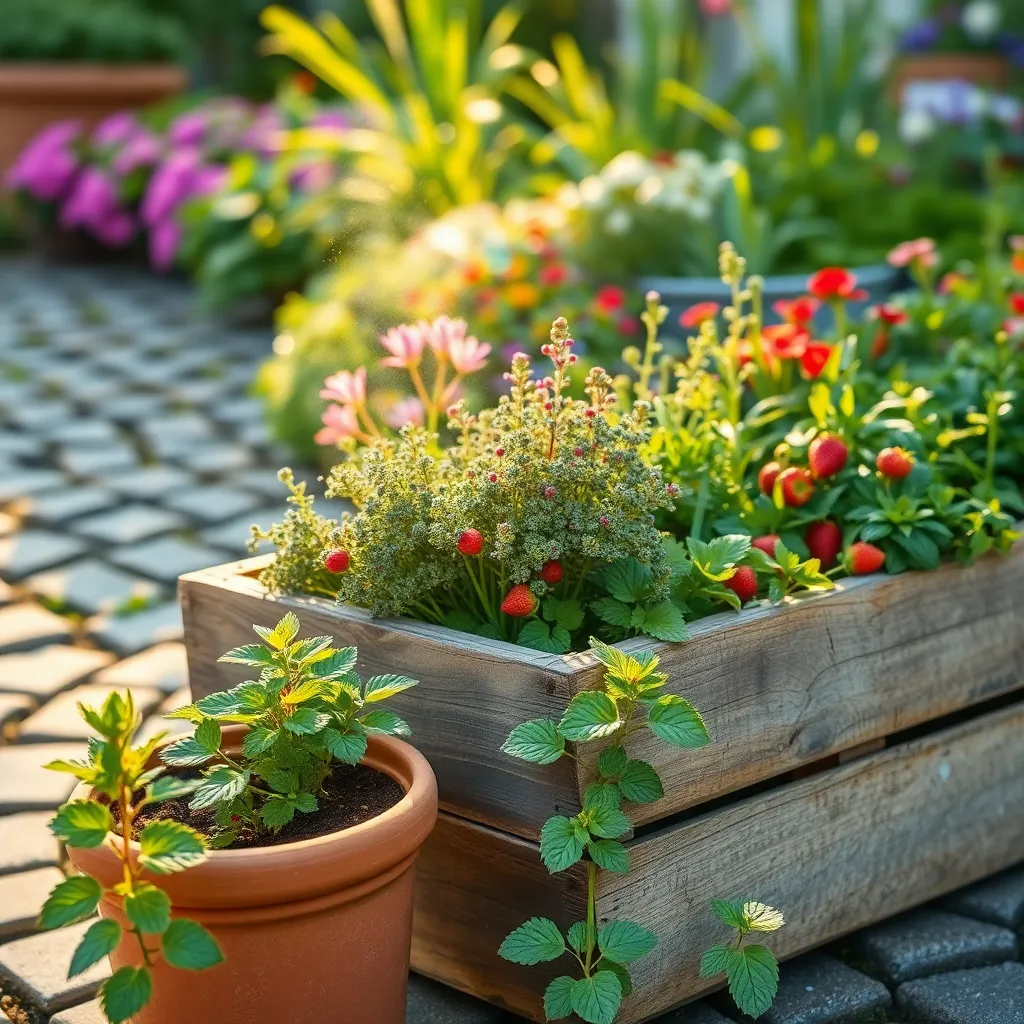
Edible perennials make a delightful addition to small gardens by providing a continuous harvest without the need for replanting each year. Consider rhubarb as a great choice; it thrives in well-drained, fertile soil and prefers a sunny location with some afternoon shade.
Once established, rhubarb requires minimal maintenance, needing only regular watering during dry spells. To ensure a healthy plant, remove flower stalks promptly to direct energy toward leaf production, which is the edible part of the plant.
Asparagus is another excellent perennial for small spaces, offering a delicious harvest each spring. When planting asparagus, prepare a trench and enrich the soil with compost, ensuring the crown is covered with about 2 inches of soil.
With patience, asparagus plants will establish themselves, typically producing spears from the second or third year onward. For optimal growth, keep the bed free of weeds and apply a layer of mulch to retain moisture.
Herbs like chives and mint are not only edible perennials but also add flavor and fragrance to your garden. Chives are easy to grow in pots or garden beds, requiring just a sunny spot and consistent watering to thrive.
While mint is vigorous and can become invasive, planting it in a container can keep it under control while still allowing you to enjoy its fresh leaves for teas and garnishes. Regular harvesting will promote bushier growth and ensure a steady supply of leaves.
Drought-Tolerant Perennial Options
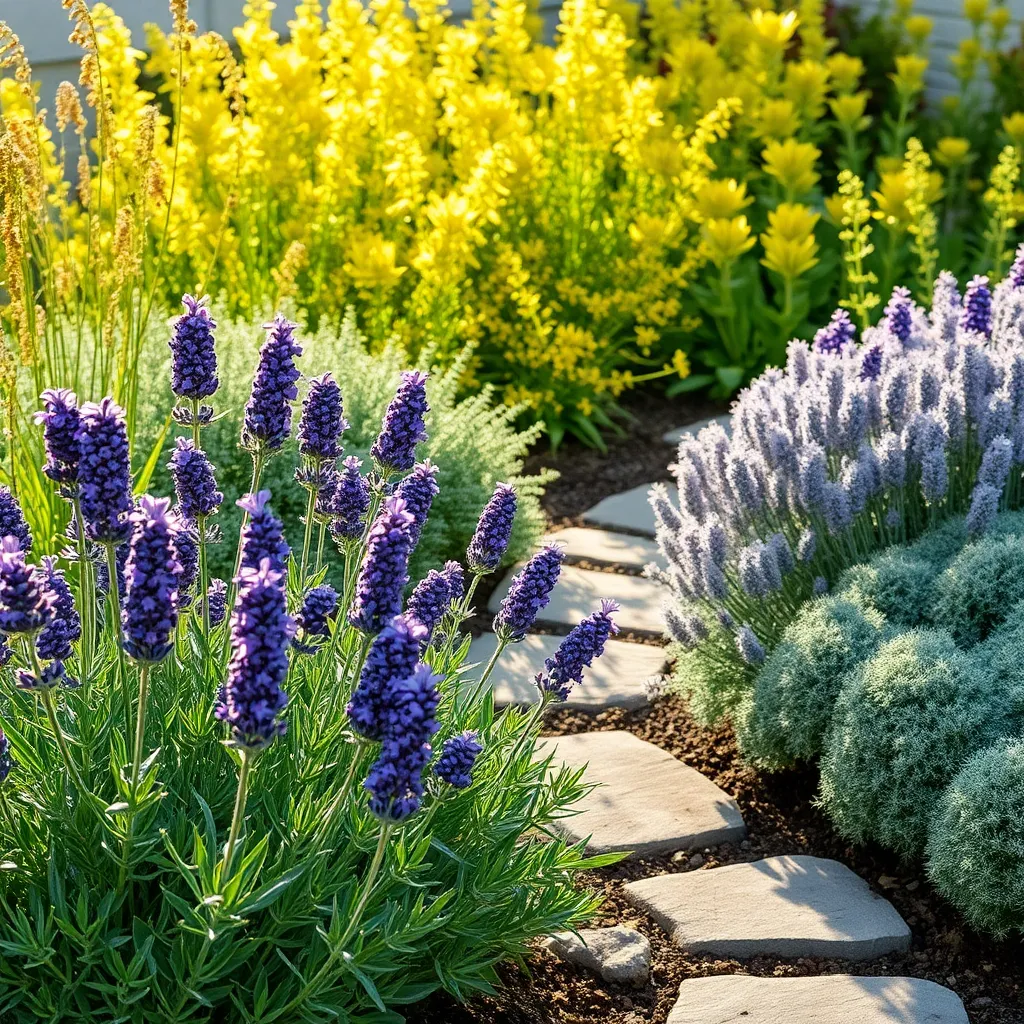
For gardeners seeking beauty and resilience, drought-tolerant perennials offer an ideal solution. These plants thrive with minimal water, making them perfect for small spaces where every drop counts.
One excellent choice is the Lavender, which not only provides stunning purple blooms but also offers a delightful fragrance. To grow Lavender successfully, plant it in well-draining soil and ensure it gets full sun exposure for at least 6 to 8 hours a day.
Another option to consider is the Yarrow, known for its fern-like foliage and clusters of tiny flowers. Yarrow prefers sandy soil and requires occasional watering, particularly during prolonged dry spells, but be cautious not to overwater as it can lead to root rot.
For a splash of color, try planting Blanket Flower, which boasts vibrant daisy-like blossoms. This hardy perennial thrives in poor soil conditions, and once established, it only needs water during extended periods of drought, making it a low-maintenance choice for busy gardeners.
Seasonal Care for Small Perennials
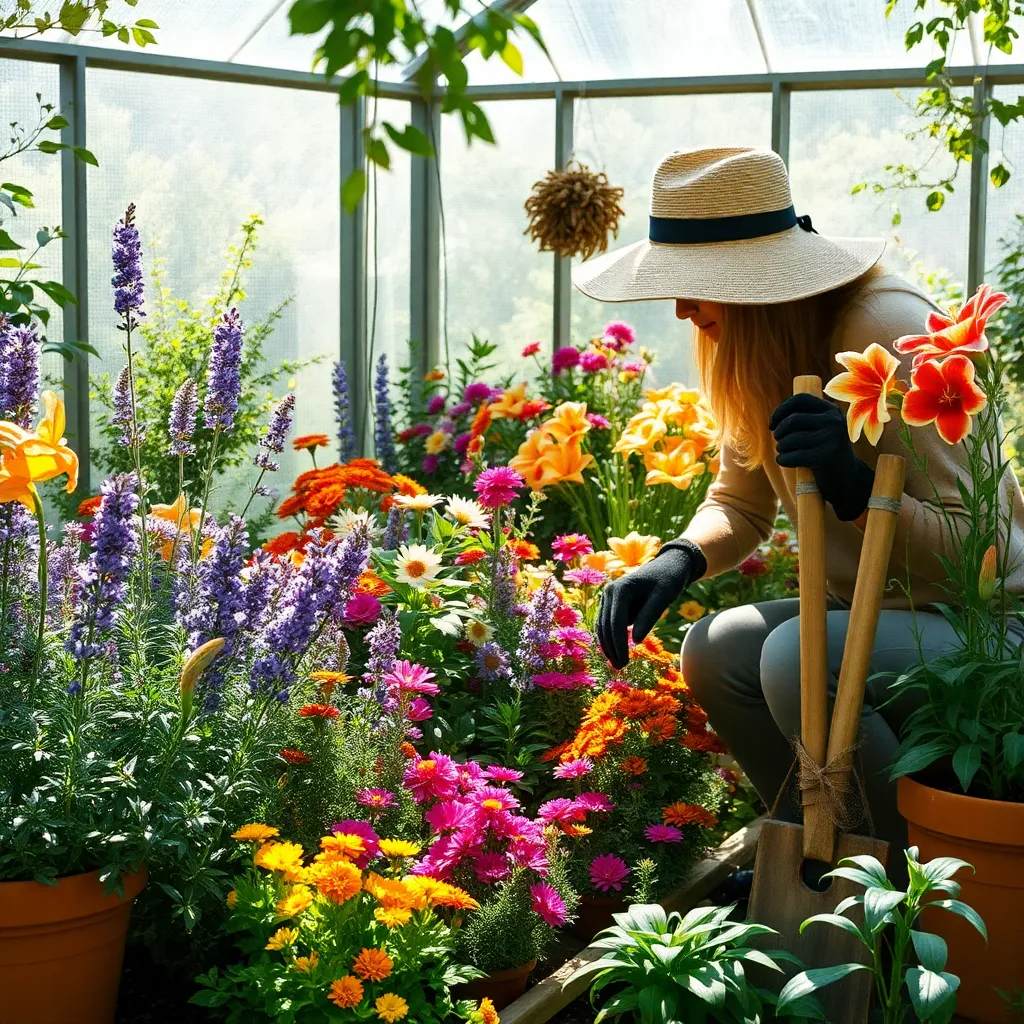
In the spring, small perennials burst into life, and it’s crucial to provide them with a good start. Begin by removing any mulch or leaves that might have accumulated over the winter to prevent rot and promote healthy growth.
Summer care involves consistent watering, especially during dry spells, to ensure that your perennials thrive. Use a drip irrigation system or water early in the morning to minimize evaporation and fungal diseases.
As autumn arrives, focus on preparing your perennials for winter dormancy. Cut back spent flowers and foliage, but leave enough stem to protect the crown from frost.
Winter is a time for rest, but you can still protect your perennials by adding a layer of mulch. This will help insulate the roots and maintain soil moisture during colder months.
For those looking to get the most out of their small perennials, consider deadheading regularly throughout the growing season. This encourages more blooms and prevents the plants from using energy to produce seeds.
Advanced gardeners might explore the benefits of soil amendments, such as incorporating organic matter like compost. This not only improves soil structure but also enhances nutrient availability, supporting robust perennial growth.
Companion Planting in Limited Space
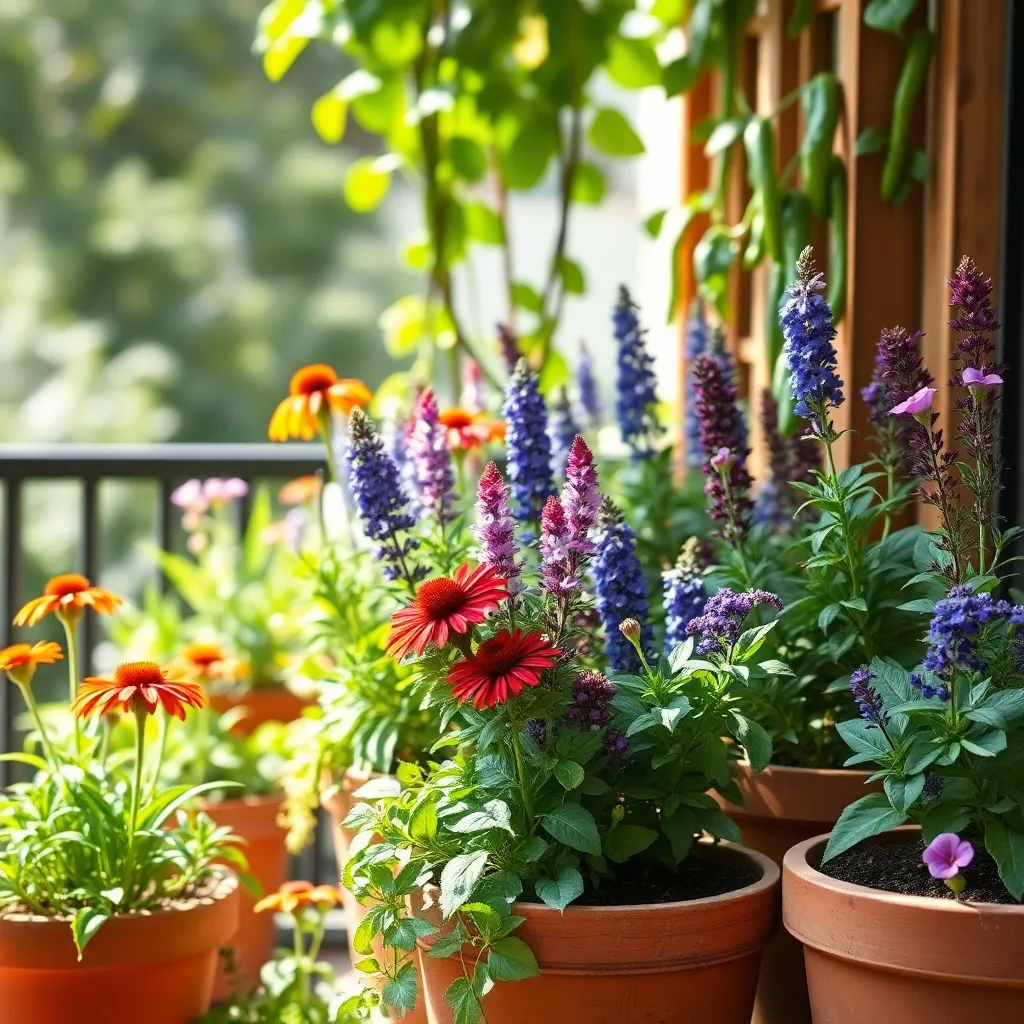
Companion planting in limited space requires careful selection and arrangement of plants to maximize both space and growth. By pairing plants that complement each other, you can boost growth and deter pests naturally, making the most of your small garden area.
Start by choosing plants that have different root depths, such as pairing shallow-rooted herbs like basil with deeper-rooted perennials like lavender. This combination allows you to make efficient use of the soil’s nutrients, as each plant accesses different layers of the soil profile.
Consider using vertical spaces by growing climbing plants like peas or beans alongside short perennials. This not only saves ground space but also creates a natural trellis, providing support and shade for shorter plants, which can help in reducing evaporation and keeping the soil moist.
To further enhance your garden’s productivity, integrate plants that repel pests naturally, such as marigolds, with your perennials. Marigolds are known to deter nematodes and other pests, providing a natural form of pest control that reduces the need for chemical interventions.
Maximizing Bloom with Minimal Space
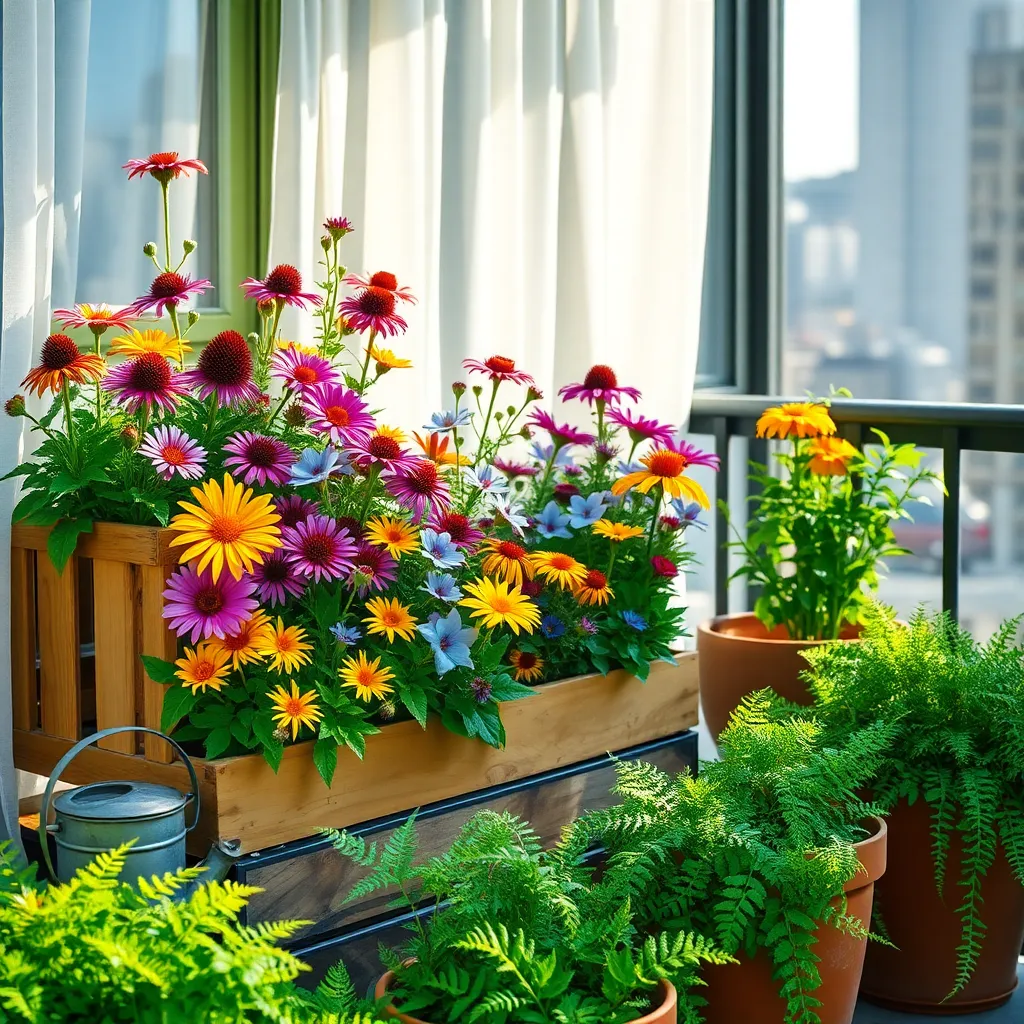
Maximizing bloom in limited space requires strategic plant selection and efficient use of vertical space. Consider using trellises or vertical planters to expand your garden upward, allowing you to grow more in a smaller footprint.
Choose perennials that are known for their compact growth and prolific blooming. Plants like Lavender and Dianthus thrive in tight spaces and provide a burst of color with minimal maintenance.
To ensure healthy growth and vibrant blooms, focus on quality over quantity when selecting soil. Use a well-draining potting mix enriched with compost to provide essential nutrients to your perennials.
Watering is another critical factor in small space gardening; ensure your plants receive consistent moisture without overwatering. Install a drip irrigation system or water deeply but infrequently to encourage deep root growth.
For those with a bit more experience, integrating succession planting techniques can help maintain continuous blooms throughout the growing season. Rotate plants with varying bloom times to ensure your garden is always full of color.
Conclusion: Growing Success with These Plants
In exploring the rich tapestry of relationships, we’ve delved into 13 essential perennials—those enduring practices that thrive even in the smallest of relational spaces. We’ve discussed the importance of communication, the nurturing of trust, the cultivation of empathy, and the celebration of each other’s growth. We’ve also highlighted the power of shared goals, the necessity of forgiveness, and the joy of mutual support. These timeless concepts form the foundation of a resilient partnership that can flourish even amid life’s constraints.
As a next step, choose one concept to focus on this week. Perhaps it’s dedicating time for meaningful conversations or practicing active listening. Small, consistent actions can lead to profound changes.
Remember, relationships are a garden that requires ongoing attention. Bookmark this article as your go-to guide, ensuring these principles are never far from reach. By doing so, you’ll be equipped to revisit and reinforce these practices as your relationship blossoms.
Looking ahead, know that with dedication and love, your relationship can continue to grow stronger and more beautiful over time. Embrace these perennials, and watch your partnership thrive in any space.

